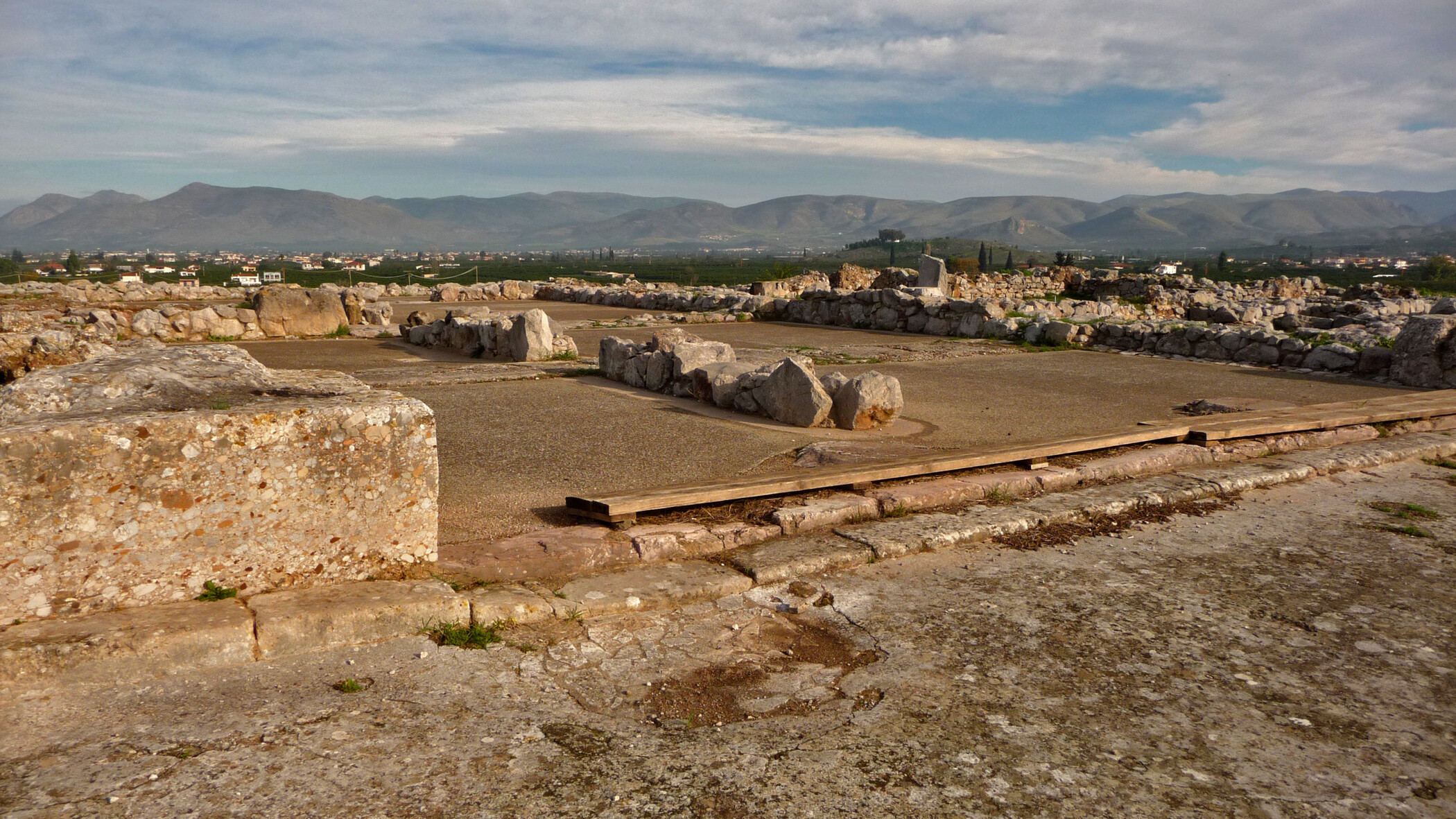Middle Helladic and Mycenaean pottery from Tiryns
Tiryns is one of the famous citadels of the Mycenaean era in the Peloponnese. Its history during the palatial period in the 13th and 12th century BC is well-known, but its development during the Middle Bronze Age and early Late Bronze Age is less understood. The project is dedicated to a Middle and Late Bronze Age pottery complex found during excavations at the Upper Citadel.
In the years 1997 and 1998, excavations were carried out in the area of the Great and Little Megaron in the Upper Citadel of Tiryns in the course of conservation under the direction of Joseph Maran (University of Heidelberg). Interest in the architectural history of the Upper Citadel and in particular in that of the two Megara has not been aroused since the excavations under the direction of Heinrich Schliemann and Wilhelm Dörpfeld in the years 1884/85. In the first half of the 20th century Wilhelm Dörpfeld, Georg Karo and Kurt Müller, amongst others, continued the work, and areas that were not touched by these excavations were explored under the direction of Klaus Kilian in 1984 and 1985. Despite these intensive excavations, the accurate architectural history and dating of the individual buildings remained unclear. Of particular importance are the findings of the Upper Citadel of Tiryns, as Klaus Kilian, in short preliminary reports, expressed the opinion that these finds proved the existence of one of the most ancient Mycenaean palaces – a presumption that did not remain unchallenged. Mycenaean pottery found during the excavations of 1984 and 1985 was presented by Hendrikje Stülpnagel as part of her doctoral thesis; the related architectural remains are, however, still unpublished due to the early death of Klaus Kilian. Following the excavations of the years 1997/98 under the direction of Joseph Maran, it is now possible to analyse the documentation of the excavated architectural remains and the pottery in parallel, and thereby gain new insights into the architectural history of the Upper Citadel of Tiryns and thus the earliest palace period of the Mycenaean culture.
Principal investigator
Cooperations
Joseph Maran (Excavation director; Universität Heidelberg, Institut für Ur- und Frühgeschichte)
